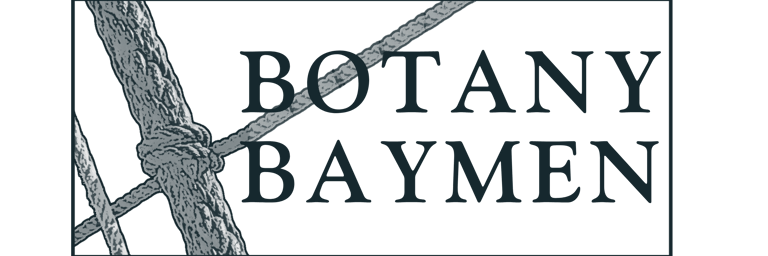Figureheads and Fiddleheads
Head Decoration on Early Botany Baymen
Gary L. Sturgess
11/22/20256 min read
Ships are characters, each with a personality of their own. Among the early Botany Baymen, the Sirius (1787) was ‘so deep with stores and having such broad buttocks, we could hardly steer her until we got better acquainted’, the Neptune (1790) was ‘laborious and dangerous’, the Marquis Cornwallis (1796) strong, fast, and ‘as well found as any ship that ever went to sea’.
In the years covered by this project (1787 to 1800), Botany Baymen differed in size from the Friendship (1787), some 80' long and 25' across the beam, a 278-ton snow with two masts and a small trysail, to the Royal Admiral (1792 & 1800), a majestic East Indiaman, 161' long and 37' 4" wide, with three masts, three decks, and a burthen of 914 tons.
One in three had a raised quarter deck, the space behind the main mast generally reserved for the officers and gentlemen. Half had a ‘roundhouse’ at the rear of the quarterdeck to accommodate the master and the most important of his passengers. One quarter had a raised forecastle, a section at the front of the ship usually set aside for the crew’s accommodation (but on Botany Baymen, often used for the convicts). One third had galleries, enclosed balconies at the ship’s stern, and a similar number had gunports along the side. All of them had scuttles cut into the hull for ventilation.
Of the 49 transports and naval vessels sent to NSW in this period for which we have the relevant details, two-thirds had some form of decoration on the head. Four in ten of these were female figures, one in three male, with the rest being animals, mythical beasts and figurative scrolls. The images which survive for some of these are the subject of this Catspaw.
(Note that the images reproduced here are of relatively poor quality because they focus on a detail from much larger paintings – the artists were not paying particular attention to the figurehead.)
Of the 11 ships of the First Fleet, the head was decorated on four. HMS Sirius, the commodore of the convoy, bore a carving of a man (shown at the head of this article), believed to be of the Duke of Berwick, after whom the ship had originally been named. The figurehead on the Lady Penrhyn was a woman (for which no illustration is known), but it was presumably a representation of Anne Susanna Pennant, Lady Penrhyn herself.


HMB Supply and the Prince of Wales had fiddlehead scrolls – a drawing of the one on the Supply is included below.

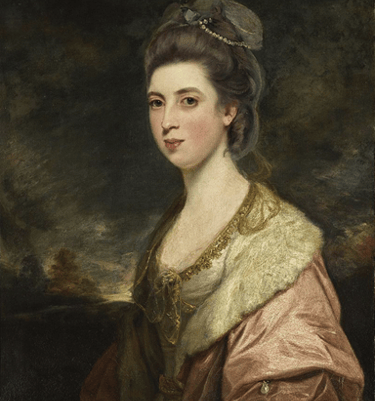
Joshua Reynolds’ portrait of Lady Penrhyn, c.1778 [2]
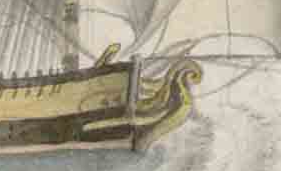

Detail of George Raper’s watercolour of the Supply showing her fiddlehead scroll [3].
The other seven ships of the First Fleet had no form of adornment, an uncharacteristically high proportion for the time. A contemporary painting of the Borrowdale, one of the storeships, shows the head of a vessel without decoration


Detail of Francis Holman, ‘The Borrowdale’ [4]
There were three transports called the Britannia which sailed to NSW in this early period. One of these, which carried out convicts in 1791 and again in 1798, bore the distinctive figurehead of a woman. One might assume that this would be of the helmeted warrior with spear and shield, but the painting below, of the Britannia leaving Sydney Cove in 1798, suggests otherwise.
Detail of George Raper’s painting of HMS Sirius, showing the figurehead, prob.1788 [1]
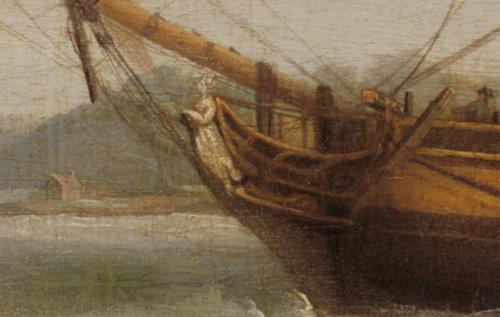

Detail of Thomas Whitcombe, ‘Departure of the Britannia. . . ‘, 1798 [5]
The figurehead on the Pitt, a former East Indiaman which carried out convicts in 1791-92, was similar to that on the Britannia (1791), and in the painting below, Britannia appears to be carrying a spear.


Detail of Thomas Whitcombe, ‘East Indiaman Pitt. . .’, 1793 [6]
Another of the Britannia-named transports was a storeship under the command of Captain William Raven, which sailed out in 1792 and remained in the region for the next five years, undertaking trading voyages on behalf of the government and the military officers. The image below of her bow shows a female figure with an object in her hand, suggesting that she might have borne a representation of the warrior after whom she was named. (At this time, Britannia had not acquired the helmet and trident, which would become her identifying features in the 19th century.)
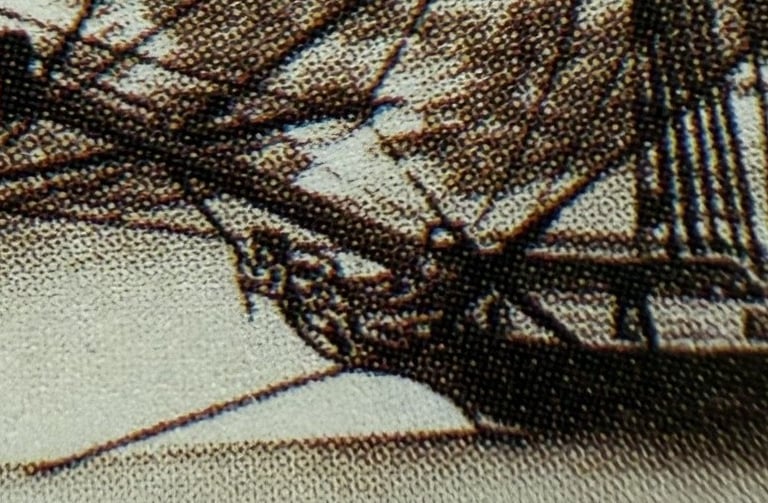

Detail of Port Jackson Painter, ‘A Partial View of Sydney Cove. . .’ showing the Britannia, Raven in the cove. [7]
The only other illustration of a figurehead on a Botany Baymen from this period is that of the Marquis Cornwallis (1796 and 1798), painted when she was still known by her original name, Il Nettuno. While it is not obvious from this painting, it was the figurehead of a woman.


Detail of F.B. Solvyns, ‘Portrait of Il Nettuno’, 1793 [8]
None of these ship decorations has survived. The original figurehead of HMS Sirius was lost in a storm off the east coast of Van Dieman’s Land on the night of 21 April 1789, as she was returning from a round-the-world voyage to the Cape of Good Hope for provisions. There is no evidence that it was replaced (which means that George Raper’s painting at the head of this article was made in 1788 and not 1789 or 1790 as the Natural History Museum has supposed).
HMS Guardian, a naval vessel which was carrying out stores and a few convicts in 1789, was crippled by an iceberg in the Great Southern Ocean and taken into the Cape, where she was beached. Her figurehead is shown in a watercolour made by her commander, Lieutenant Edward Riou, but unfortunately his sketch was not sufficiently detailed for us to establish what it was.


Detail of the Guardian in Edward Riou’s painting of the crippled ship making its way into Table Bay at the Cape [9]
Having removed the cargo and scuttled the ship, Riou took the figurehead with him on his return to England in March 1791. The fate of the figurehead is unknown.
________________________
[1] George Raper, ‘His Majesty’s Brig Supply; His Majesty’s Ship Sirius’, c.1790, ink and watercolour on paper, Natural History Museum, London, George Raper Collection No. 4.
[2] Joshua Reynolds, ‘Portrait of Mrs Richard Pennant’, c.1778, oil on canvas, private collection.
[3] George Raper, ‘His Majesty’s Brig Supply; His Majesty’s Ship Sirius’.
[4] Francis Holman, ‘First Fleet Ship Borrowdale’, oil on canvas, Australian National Maritime Museum, Object No. 00009033.
[5] Thomas Whitcombe, ‘Departure of the whaler Britannia from Sydney Cove’, 1798, oil on canvas, National Library of Australia, Rex Nan Kivell Collection NK7.
[6] Thomas Whitcombe, ‘East Indiaman “Pitt” in Two Positions off the Needles’, 1793, oil on canvas, Silentworld Foundation, Sydney, NSW, Object No. SF001131.
[7] Port Jackson Painter, ‘A Partial View of Sydney Cove Taken from the Sea side before the Surgeon General’s House’, watercolour on paper, Natural History Museum, London, Watling Collection 14.
[8] F.B. Solvyns, ‘Portrait of Il Nettuno, later Marquis Cornwallis, under sail’, 1793, oil on canvas, State Library of NSW, ML 1353.
[9] Edward Riou, ‘The Guardian Arrived in Table Bay’, 22 February 1790, Rough Sketching Book, Papers of Capt. Edward Riou (1762-1801), Caird Library, Royal Museums Greenwich, RUSI/NM/235/ER/3/9.
Contact us
Connect with us
Botany Baymen acknowledges the traditional custodians of country throughout Australia and respects their connection to land, water and community.
© Botany Baymen 2024. All rights reserved.
You may download, display, print and reproduce this content for your personal or non-commercial use but only in an unaltered form and with the copyright acknowledged.
